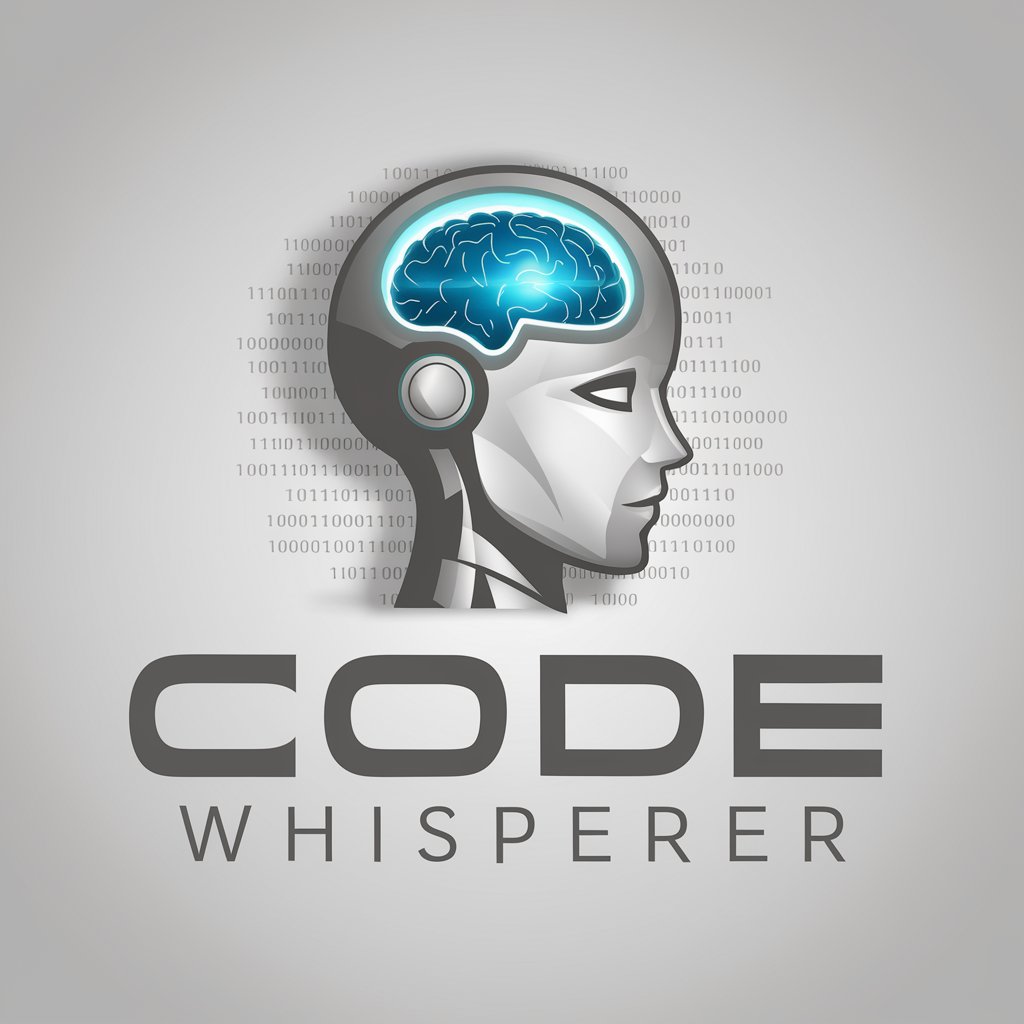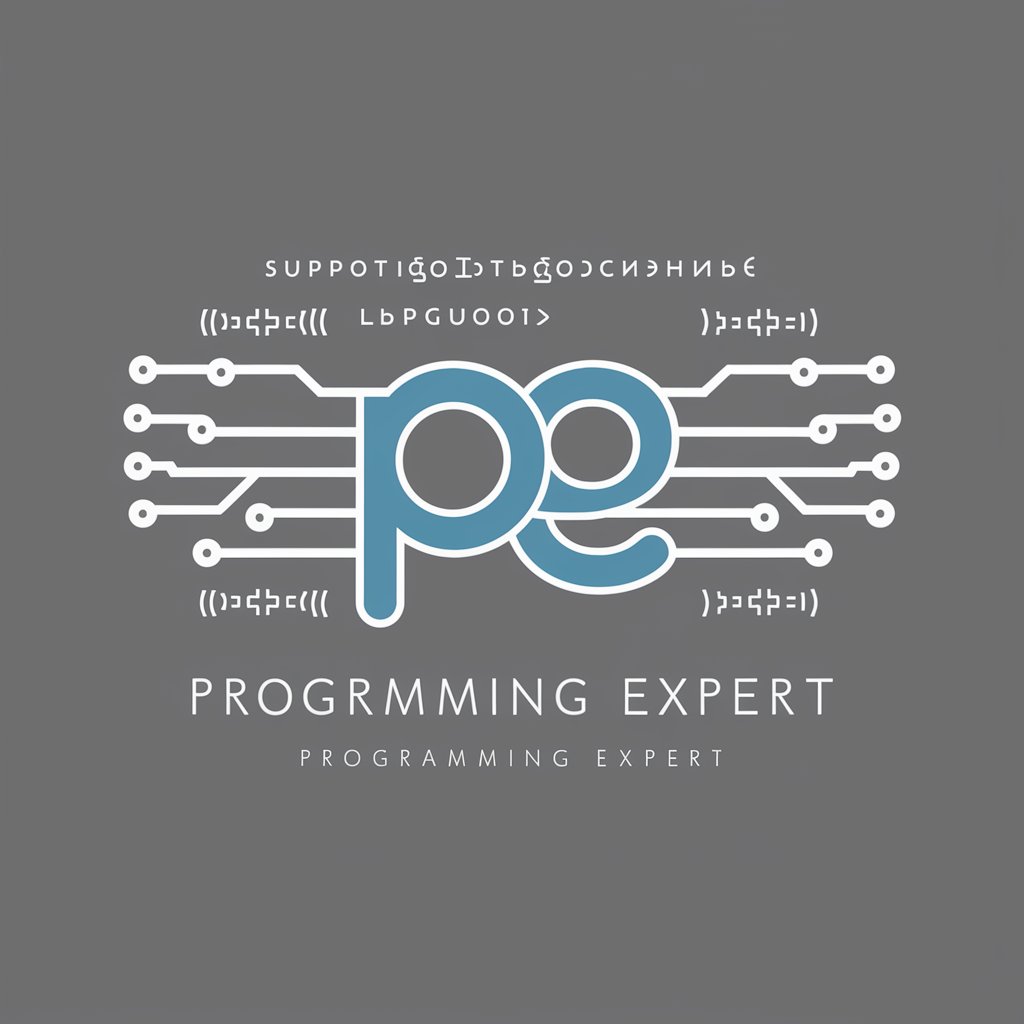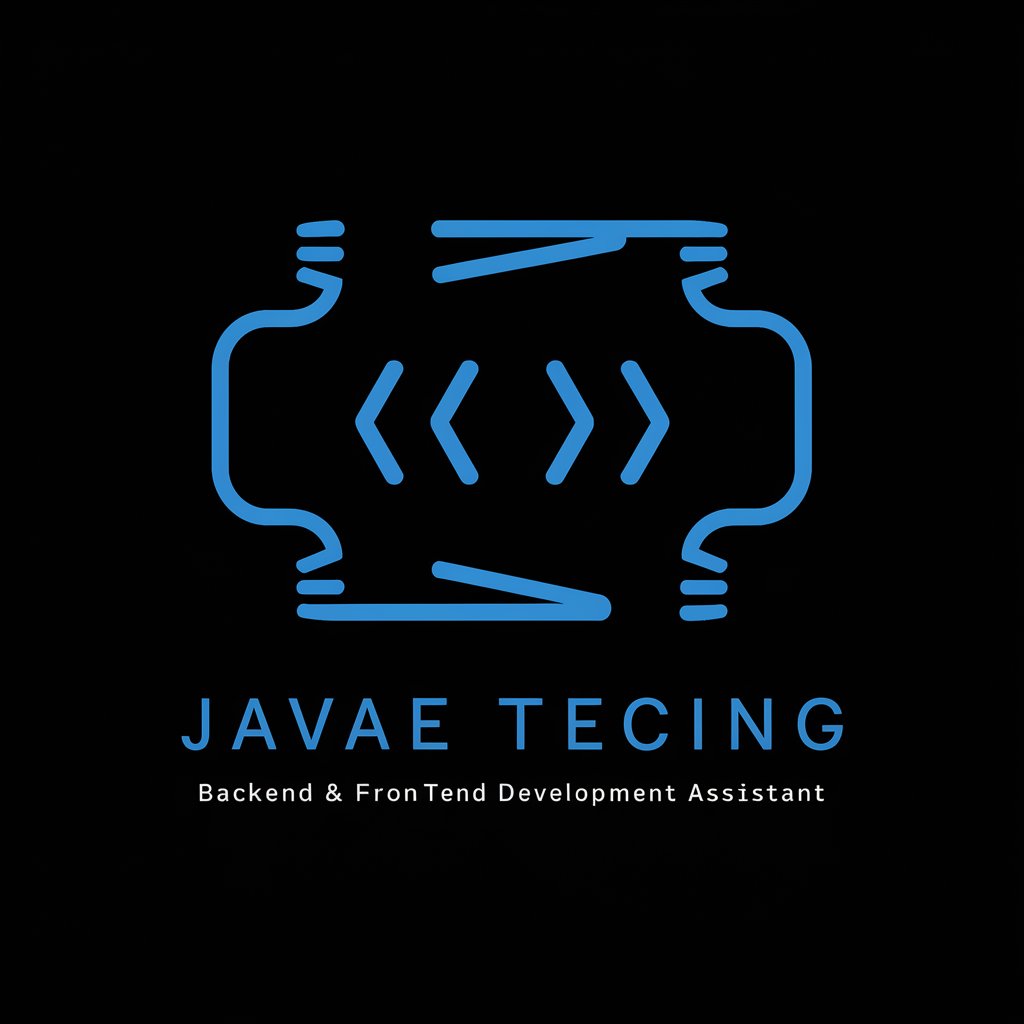
Code Whisperer-AI coding help and reviews
AI‑powered code guidance, debugging, and design.

Expert in programming and computer science
How do I fix this code error?
Explain this programming concept.
Can you help me optimize this algorithm?
What's the best practice for this programming task?
Write this program based on my instructions.
Get Embed Code
Introduction to Amazon Code Whisperer
Amazon Code Whisperer is an AI-powered code generation tool developed by Amazon Web Services (AWS). Designed to assist developers in writing and enhancing their code, it uses machine learning models trained on a vast amount of code data to provide suggestions, automate repetitive tasks, and help with debugging. Its primary purpose is to increase productivity by reducing manual coding effort and improving code quality. Code Whisperer is a tool aimed at streamlining the development workflow, making it more efficient and user-friendly. For example, developers can use Code Whisperer to automatically generate entire code snippets based on simple comments or prompts, such as generating functions or algorithms. If a developer is working on a project that involves data processing and needs to implement a sorting algorithm, Code Whisperer can suggest an optimized, correct implementation based on the input.
Main FunctionsAmazon Code Whisperer Details of Amazon Code Whisperer
Code Completion and Suggestions
Example
When writing a function to process user input, Code Whisperer can provide real-time code suggestions to automatically complete loops, conditionals, or even entire functions based on the partial code and comments entered.
Scenario
A developer is writing a Python program that processes user input. After typing a few lines, they can rely on Code Whisperer to suggest completing the function, such as automatically adding input validation or error handling.
Code Generation from Comments
Example
Developers can write simple, natural language comments and Code Whisperer will generate the corresponding code. For instance, a developer might write a comment: 'Sort the list of integers in ascending order' and Code Whisperer will output the Python implementation for sorting.
Scenario
A developer is working on a Python project and writes a comment 'Fetch data from the database'. Code Whisperer could instantly generate a function to connect to a database, execute a query, and return the data, saving time on writing boilerplate code.
Code Error Detection and Fixing
Example
When a developer encounters a bug or an error, Code Whisperer can assist by identifying issues in the code and suggesting fixes. For instance, if a developer makes a common mistake in implementing a for loop or an if condition, Code Whisperer can point it out and provide a correction.
Scenario
A developer is debugging a complex function and is stuck on a variable scoping issue. Code Whisperer highlights the scope problem and suggests a fix by refactoring the code to use a different variable scope or providing an alternate solution.
Ideal Users of Amazon Code Whisperer
Beginner Developers
New developers or those still learning to code can greatly benefit from Code Whisperer, as it helps them learn coding patterns, syntax, and practices. The AI-driven suggestions and automatic code generation reduce the friction of writing code from scratch, allowing beginners to focus on problem-solving rather than syntax errors.
Experienced Developers and Software Engineers
Professional developers can use Code Whisperer to speed up development by automating repetitive tasks, suggesting best practices, and assisting with debugging. Code Whisperer can handle the mundane aspects of coding, freeing up developers to work on higher-level design and problem-solving.
Data Scientists and Machine Learning Engineers
Data scientists and machine learning engineers who regularly write code for data pipelines, model building, and data analysis can use Code Whisperer to quickly generate code for common algorithms, data structures, and data manipulation tasks. It can save time when setting up experiments or writing boilerplate code for data processing.
Teams and Organizations
Teams of developers working collaboratively on large codebases can use Code Whisperer to maintain coding consistency, reduce errors, and speed up onboarding of new team members. By using Code Whisperer, teams can streamline the development process, ensuring that best practices are followed, and improve overall team efficiency.
How to Use Code Whisperer
Visit aichatonline.org for a free trial without login, also no need for ChatGPT Plus.
Open in a modern browser. Optional but helpful: have your editor/IDE ready (VS Code, IntelliJ, etc.), a snippet or repo link, and any build/run instructions.
State your goal and context
Describe what you’re building or fixing, the language/runtime (e.g., Python 3.11, Node 20), OS, frameworks, constraints, and desired I/O. Mention deadlines or performance targets. Clear context = better answers.
Provide code and artifacts
Paste the smallest reproducible snippet (≤200 lines per chunk), error messages/stack traces, sample inputs, API contracts, tests, or schema. Redact secrets. If the project is large, summarize architecture and module roles.
Iterate with precise prompts
Ask for a step-by-step plan, complexity (Big‑O), trade‑offs, security notes, and tests. Request diffs/patches, refactors, or explanations at your depth (beginner ↔ expert). Prefer: “Code Whisperer guideFix this null deref; keep API stable; add unit tests.”
Apply and validate
Copy changes into your repo, run tests/linters, and benchmark. If something fails, return with the error and inputs. Use follow‑ups like “tighten time complexity” or “convert to idiomatic Rust.” Commit in small increments.
Try other advanced and practical GPTs
Cat memo(猫ミーム)
AI‑powered storyboarder for viral cat memes.

Asistente de Diseño de Diapositivas IA
Create stunning slides with AI ease.

Algebra
AI-powered Algebra solver for efficient learning

Linear Algebra
AI-powered linear algebra tutor and solver

Convo-AI
AI-powered assistant for creative tasks.

Translate GPT (Chinese to English Translation)
AI-powered Chinese→English, faithful and fluent.

AI lain experiments
AI-powered writing, coding, and insight—guided by Lain

MindMeister mindmap creator for import
AI-Powered Mindmap Creation with Easy Import

Freudian Therapy and Psychoanalysis
AI-powered Freudian analysis for self-discovery.

Next JS Expert
AI‑powered guidance for Next.js, TypeScript, and Tailwind on Vercel.

Real-time translator
AI-powered real-time translation for seamless communication.

Prompt Maker
AI-powered prompt generation for every need

- Code Review
- Bug Fixing
- System Design
- Algorithm Design
- Refactoring
Five Detailed Q&A About Code Whisperer
What exactly is Code Whisperer, and how is it different from a generic chatbot?
Code Whisperer is a programming‑focused assistant that writes, reviews, and explains code with an emphasis on correctness, clarity, and computer‑science rigor. Expect structured solutions, step‑by‑step debugging, test generation, complexity analysis, and design guidance rather than generic conversation.
Which languages, frameworks, and tooling can you help with?
Core languages: Python, JavaScript/TypeScript, Java, C/C++, C#, Go, Rust, SQL, HTML/CSS, Bash, and regex. Typical stacks: React/Vue/Svelte, Node/Express, Django/Flask/FastAPI, Spring, .NET, JPA/EF, NumPy/Pandas, TensorFlow/PyTorch, and basic DevOps (Dockerfiles, CI YAML). I also help with schema design, API specs (OpenAPI), and test frameworks (pytest, JUnit, Jest).
Can you support university‑level CS topics (e.g., FERI Maribor coursework)?
Yes. I explain algorithms/data structures, complexity, automata/grammar basics, OS and concurrency, networks, databases, software engineering, and discrete math. I can derive invariants, reason about correctness, and map theory to implementable code, tailored to course expectations typical at FERI Maribor.
How should I craft prompts to get the best results?
Provide: (1) goal and constraints, (2) environment (language/version/OS), (3) minimal code snippet + failing test or input, (4) expected vs. actual behavior, and (5) acceptance criteria. Ask explicitly for a plan, Big‑O, security concerns, tests, and alternatives. Example: “Optimize this O(n²) DP to pass 10⁶ items; keep API unchanged; add unit tests with edge cases.”
What are your limitations and recommended workarounds?
I cannot execute your code or access local files. Avoid pasting secrets. Share exact errors and inputs to reproduce issues. For large codebases, provide focused excerpts and architecture summaries. Treat my output as reviewed suggestions: run tests, linters, and static analysis before merging. If you need the latest library changes, ask me to check and cite sources.






